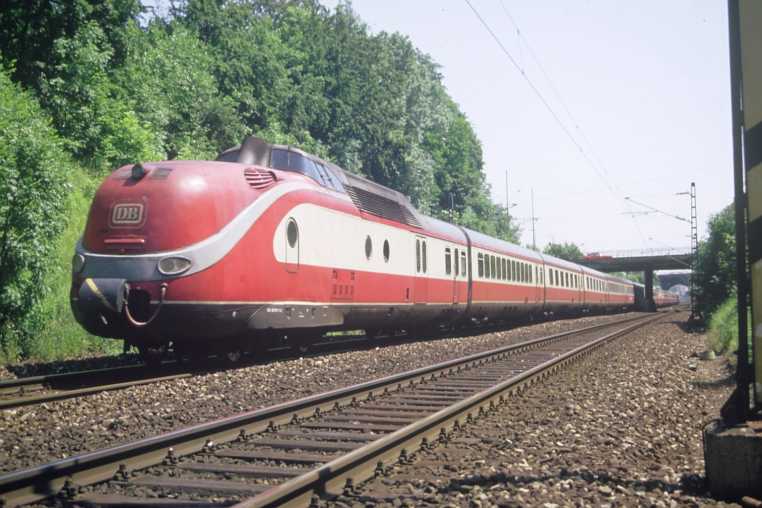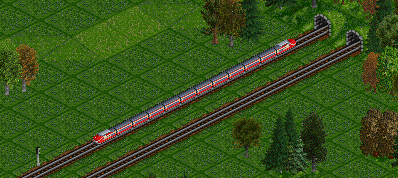Description
This DMU was developed for first-class international connections, basically as continuation of the Rheingold from before World War II. As electrification had not yet reached all relevant areas, diesel engines were used, and starting in 1957 the trains were used for international services to Amsterdam or Paris. These machines with their characteristic shapes became colloquially known as TEE, synonymous with luxurious railway travel.
They were still in use with the introduction of the Intercity-network in Germany in the 1970s. The last international services of the time were run between Munich and Milano, usage with Intercity services ended in 1979 when the slogan "every hour, every class" (meaning both first and second class) was realized. The trains did not have a second class, and by then all relevant lines had been electrified. The trains were then used for holiday season connections between the rural areas and the Alps. They were finally retired in the late 1980s.
This type comes in when the express trains like the Rheingold will start to need replacing. It can run on all non-electrified lines, connecting the biggest cities over the longest distances.
Images and Screenshots

(© Benedikt Dohmen / CC-BY-SA-3.0 via Wikimedia Commons)
A TEE in 1986, shortly before their withdrawal

A VT-11 with the typical TEE livery of the 1960s.
Technical Data
| Name | VT-11.5 / BR 601 (TEE) |
|---|---|
| Built | 1957-1975 |
| Power | 2200 hp |
| Tractive effort | 256 kN |
| Speed | 88 mph |
| Usage | fast trains |
| Type of terrain | flat to hilly |
Links
| Wikipedia | RailfanEurope |
